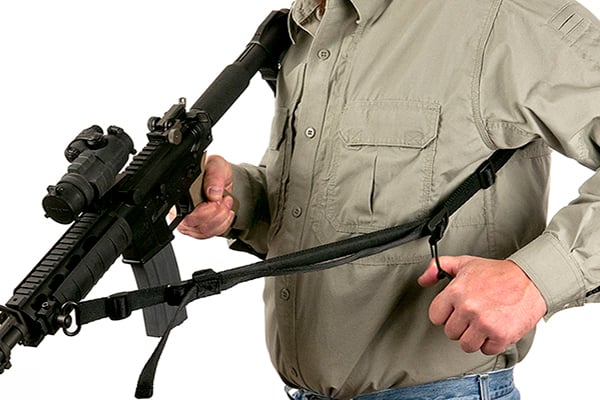
Last Updated on
I don’t know when the first rifle sling was invented but it likely coincided with the first lazy soldier being handed a medieval hand cannon and told to march around with it. Skip ahead a few hundred years and leather slings on muskets and rifles were a common sight, making life easier for anyone who regularly carried one.
The Elmer Fudd
We still see plenty of basic leather and nylon slings intended for the sole purpose of carrying a rifle, muzzle up, across the back. Nowadays this is largely relegated to hunters and those situations where the rifle is not likely to be put to immediate use. I call these traditional mostly leather slings with the wide portion at the shoulder and the invariably image of a buck the Elmer Fudd. This is a simple, adjustable and comfortable two point sling that keeps the rifle securely on the shoulder while getting it from point A to point B while keeping the hunter’s hands free to scratch indiscriminately. The key element here is that the sling is designed to attach to the sling swivels located under the barrel and at the toe of the stock. This keeps the bottom of the rifle against the body and the less comfortable action away from the body. A good example is this BUTLER CREEK Leather Cobra sling from Uncle Mikes
Two-Point Sling
The traditional military style two-point sling serves the same purpose as the Elmer Fudd but offers a higher degree of versatility. Leather military two point slings featured a lot of adjustment and could also be sued to aid in shooting by wrapping the front portion around the support arm for greater stability in various shooting positions. Butler Creek also makes a great example of this Leather Military sling. These eventually gave way to basic (and much cheaper) nylon slings which retained the two point design and the traditional under-the-rifle sling swivels.
Enterprising troops soon figured out that on patrol the ready position was far preferable, with the rifle carried in front of the body right side up. Since the sling swivels were on the bottom of the rifle people improvised using para cord or aftermarket devices to allow the sling to attach at the top or sides of the rifle. Having a sling tied to the top of your front sight or otherwise blocking it is not ideal and now we have plenty of tactical rifles that come with sling attachment points on the sides as well as accessories that let you do this to most any rifle.
The modern two-point sling lets you carry your rifle at the ready across your front with the muzzle pointed down towards your support side. The key here is in the sling having sufficient give to allow you to shoulder it comfortably while at the same time being snug enough to keep the rifle close. Vero Vellini produces the Vero Tactical Two-Point Adjustable Sling. A quick pull loop design allows the user to easily adjust the length of the sling for any condition or type of carry or shooting. The webbing material is designed to last and the interior padding is designed not to catch or bind on gear or clothing. A quick length adjustable sling also makes it possible for the shooter to engage targets from either the strong or support side and shoulder the rifle on either the right or left to compensate for shooter position vis-à-vis the threat.
Another excellent example of this type of sling is the BLUE FORCE GEAR Vickers Padded 2-Point Combat Rifle Sling. This easily allows the user to go from the standing to the prone position while staying slung. Adjustable two point slings also have another advantage when it comes to movement and weapon transitions. Since the rifle can be kept very close to the body and is retained at two points it is much easier for the user to move without the rifle banging away at you. You can bend over without the rifle dangling in front of you and you can kneel without the muzzle ending up in the dirt with a possible obstruction. If you have to transition to a pistol you can release the rifle with minimal discomfort and it will stay out of your way.
Single-Point Sling
Carried in the same fashion as a two-point sling, the single-point sling differs in that it attaches to the rifle at one location only. The rifle stays in front of the user in the ready position but hangs straight down. The best place to attach a single-point sling is where the receiver meets the stock or in the area to the rear of the pistol grip. Some rifles already include QD (Quick Detach) sling mounts in this area and many aftermarket manufacturers make adapters to allow you to place sling points where you need them.
Lancer Systems makes a single point sling attachment system that installs over the buffer tube on AR carbines and features a polymer coated steel cable that makes the system fully ambidextrous. With single point slings the cable offers the added advantage of providing flex so that the sling can’t be twisted off. The steel cable can also be easily replaced if need be. LWRC also makes a very sturdy and ambidextrous buffer tube installed QD Sling Mount.
The advantage of basic single-point slings like the PROMAG Single Point Tactical Sling is that you don’t have to mess with adjusting it. Once you get it where you like it you can leave it there and you have quick access to your rifle and can shoulder it easily to on the right or left. You do need to keep a hold of the rifle much more when using a single-point sling. When making a weapon transition you can’t just the rifle drop but have to move it out of the way towards your support side. Likewise you need to use care when moving or kneeling if the rifle is not supported. This sling is best used for short term operations.
Most any two-point sling can be converted to single-point operation and many single-point slings are also convertible to a two-point configuration. The MAGPUL MS4 Dual QD Sling is a great example of this and serves well in both roles.
Follow the link to learn more about single-point slings.
Three-Point Slings
For the belt and suspenders crowd the three-point sling offers a high level of retention of the rifle while keeping it in front of the body at the ready. One strap goes around the torso and two others attach at the front and rear of the rifle. Uncle Mikes makes a good example of this sling using nylon webbing. This sling makes for easy weapon transitions to the handgun and keeps the muzzle of the rifle out of the dirt if you have to kneel. It does not let you transition from one shoulder to the other if you have to engage around corners for example but it is comfortable to use for extended outings.
A lot of these slings offer a high degree or versatility and are convertible. The Uncle Mikes sling mentioned has a quick detach system that converts it to a single-point sling very quickly which resolves the issue of shooting from both shoulders.
Whichever sling you choose that fits your needs look for one that offers quick detach feature in case you rifle or sling get caught up on gear or anything else and you need to free the rifle or yourself fast. Some QD systems use a push button, others have a quick release pull tab and many have slot and tab systems like web gear belts. You will also want to look for a sling that offers a conversion capability and can go from two-point to single-point easily.
Finally, it is not enough to have a sling, like every other piece of equipment you carry you also need to train with it. Practice movement, taking cover, weapon transitions, switching shoulders, engaging around corners and ingress and egress from vehicles. Only then will you be able to determine which sling combination works best for your needs.

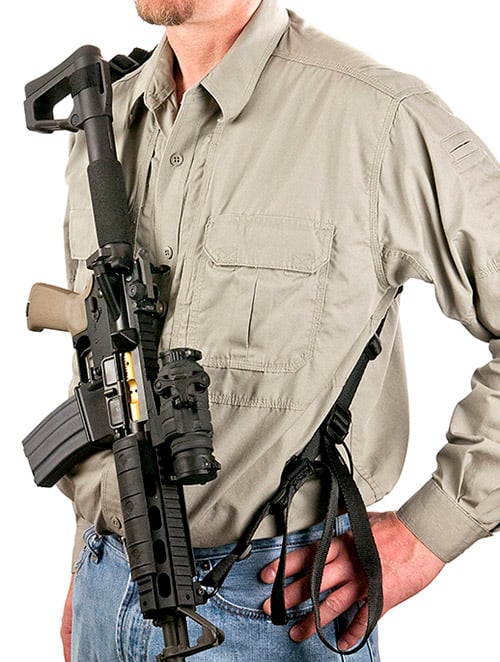
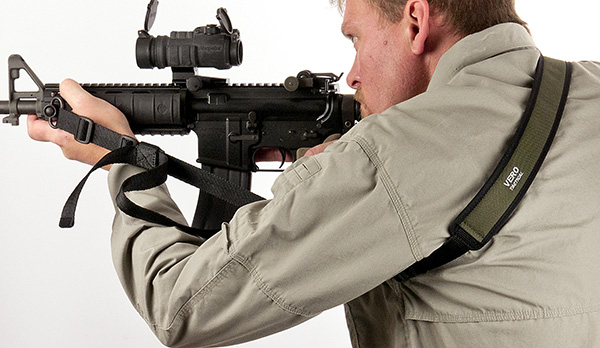



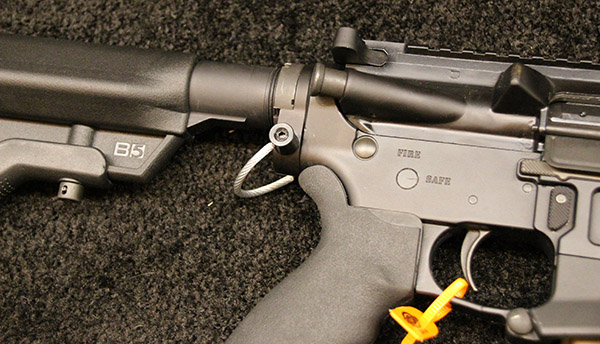
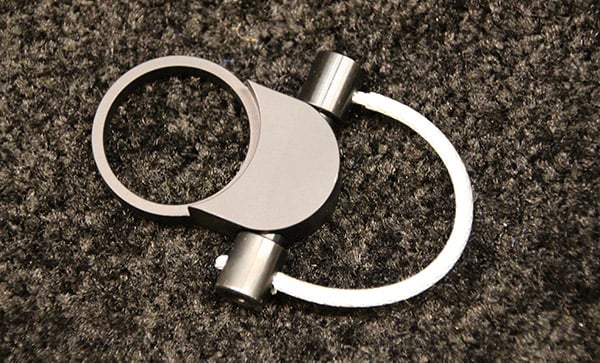




Comments (0)
Rifle Slings Comparison: Single-Point, 2-Point, 3-Point and Elmer Fudd - Guns N' Tacossays:
May 27, 2015 at 11:11 am[…] Read the rest of this article at 1800gunsandammo: http://blog.1800gunsandammo.com/rifle-slings-comparison-single-point-2-point-3-point-and-elmer-fudd/ […]